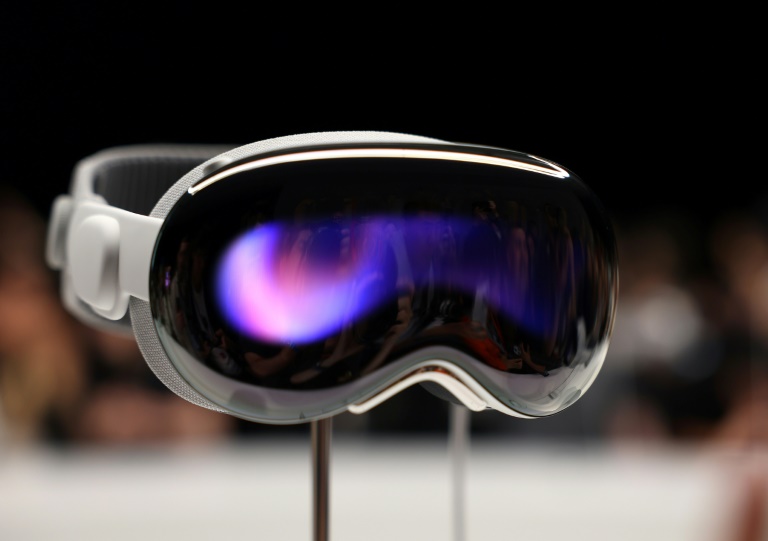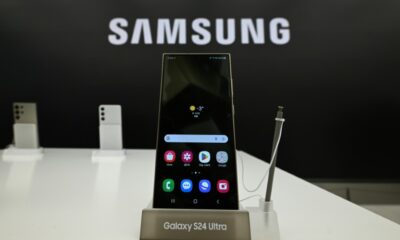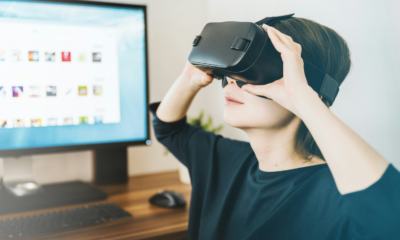Tech giant Apple has unveiled its first major product in more than seven years, a mixed-reality headset that might just deliver a terminal blow to the “metaverse”.
Silicon Valley rival Meta was so confident of it could create the metaverse — an idea of a 3D immersive internet — that it changed its name from Facebook in 2021 and began funnelling billions into the project.
But the idea has been hampered by fluffed launches, dodgy graphics, no clear path to profitability and a general feeling that few people know what it is.
Meta’s Reality Labs, the division helming its metaverse effort, has lost $4 billion so far and company chief Mark Zuckerberg has been increasingly talking up artificial intelligence rather than the metaverse.
During his presentation on Monday, Apple boss Tim Cook introduced the Vision Pro, a sleek headset resembling ski goggles.
It will allow the user to communicate, work, watch movies, listen to music — and even choose whether to be immersed or to keep an eye on the outside world.
Cook pointedly did not mention the metaverse once during the hour-long launch, with Apple promising instead the dawn of an era of “spatial computing”.
“Tim Cook has gone on record as saying that he doesn’t like using the word, he doesn’t think it has any real meaning,” said James Whatley, chief strategy officer at Diva, a marketing agency.
“The faster Meta can move away from that word, the better position they will be in combating Apple’s encroachment into the space.”
– ‘A believable vision’ –
Meta can argue that its product still has advantages over Apple’s newcomer.
The first and most obvious is the price — Apple’s Vision Pro weighs in at a whopping $3,499, more than double the price of Meta’s top-of-the-range Quest Pro headset.
Tom Ffiske, who runs specialist newsletter the Immersive Wire, pointed out that Apple was clearly pushing a different strategy to Meta.
“Apple is not seeking to build a wide XR (extended reality) ecosystem with a cheaper device, like Meta with the Quest line-up,” he wrote.
“The company instead seeks to monetise an already lucrative subsection of its audience with high-margin subscriptions and software.”
And more broadly, he told AFP that Apple had such high levels of trust “that it legitimises a product category”.
Martin Peers of technology website The Information reckoned Apple had just made Meta look like BlackBerry, the defunct Canadian smartphone maker.
He wrote that Apple had “provided a believable vision of the long-term potential of augmented reality”, a space it was well positioned to dominate at Meta’s expense.
– ‘Real-world experiences’ –
The smooth launch of Apple’s headset, complete with an awestruck video declaring it to be “like magic”, has laid down a clear marker.
Users were shown enjoying “cinematic” movie experiences, scrolling 3D photographs and videos, moving through webpages with just a hand gesture while joining FaceTime calls, and linking up to games consoles.
“Apple has rightly, and in a very traditionally Apple way, rooted it in real-world experiences,” said Whatley.
He contrasted that with Meta’s vision of “making a 3D avatar of yourself with legs that that may or may not exist in a world where there’s nothing to do”.
Yet analysts were still divided over whether such goggles will ever take off among the wider public.
Google has tried and failed, largely ending its Google Glass experiment this year.
Meta’s Quest headset has failed to break out from specialist users and gamers.
But both Ffiske and Whatley stressed that immersive technology is in its infancy and ultimately there will be enough room for two Silicon Valley giants.
“The Apple announcement will lift all boats in the tide, including Meta,” said Ffiske.

 Business5 months ago
Business5 months ago
 Business4 months ago
Business4 months ago
 Events6 months ago
Events6 months ago
 People4 months ago
People4 months ago
 Events3 months ago
Events3 months ago
















